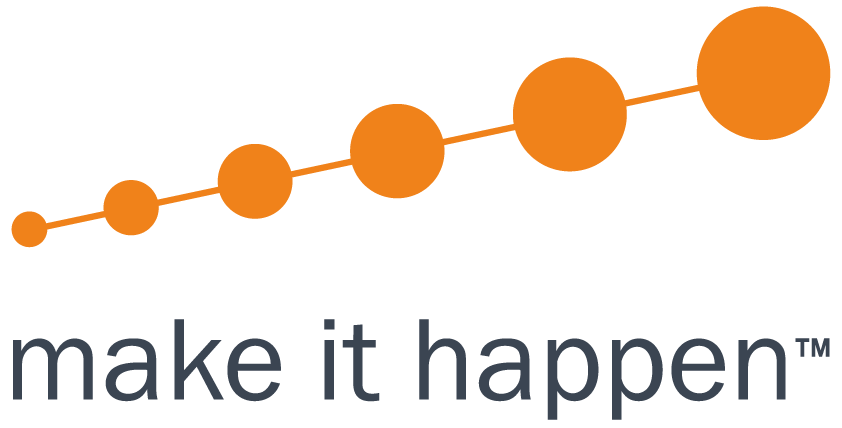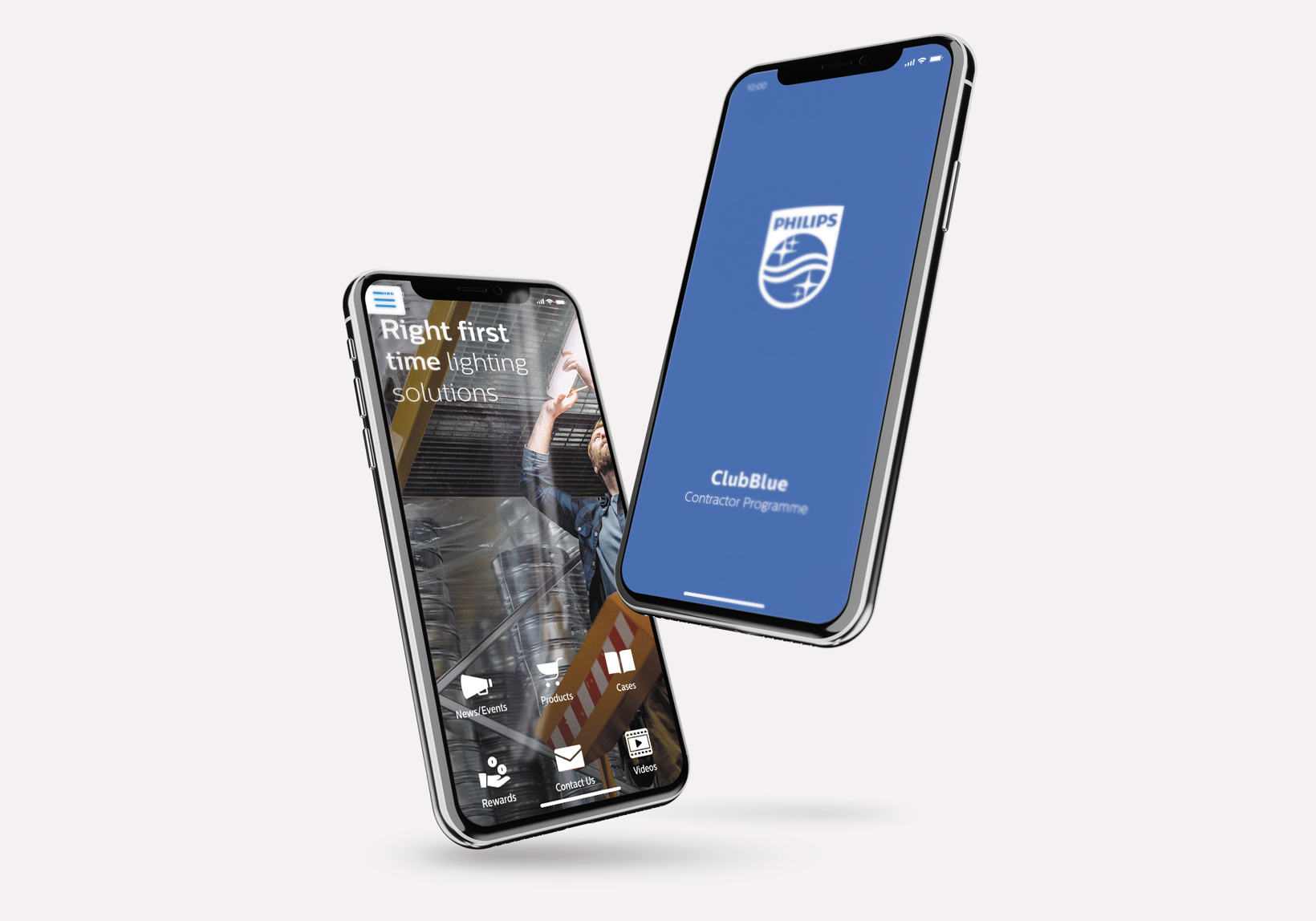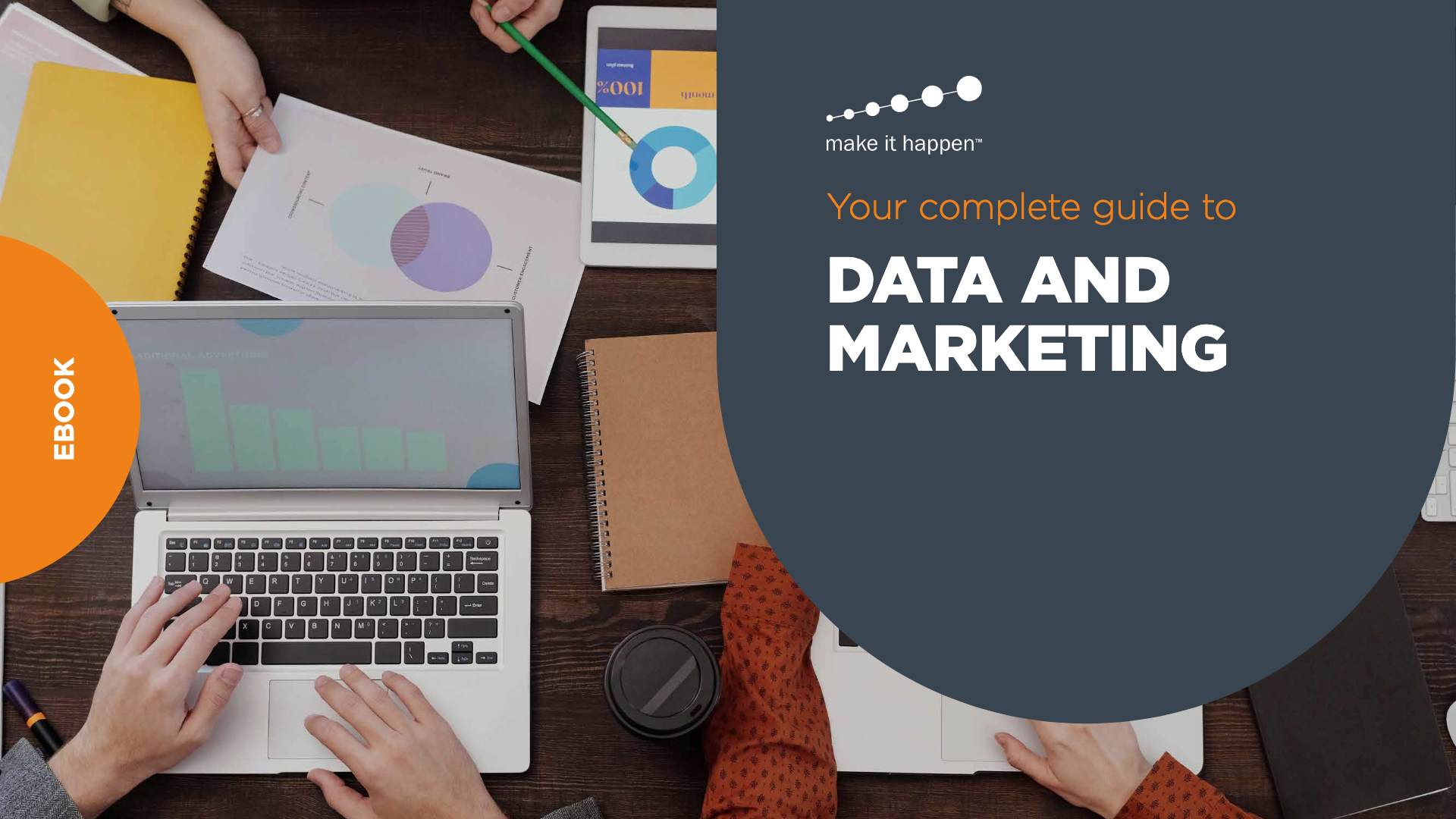
Starting at the very top, a key question many business owners, B2B and nonprofit marketers have is “what exactly is marketing data”, followed closely by “where do I get it from?”
What is marketing data?
What is marketing data and where do I get it from?
 What is marketing data and where do I get it from?
What is marketing data and where do I get it from?
Data can be divided into 2 groups. One that is designed to be read and interpreted by humans, and the other by machines. At the fundamental level, data can be divided into the following groups:

 Why it's important
Why it's important
While this should seem obvious, it’s amazing how many organisations actually place little importance on data. Others are getting it completely wrong. The third group, consisting of smaller NFPs and B2B marketing teams? Well, sometimes they skip it all together. Collecting information across your business allows management and teams to make informed, educated and strategic decisions.
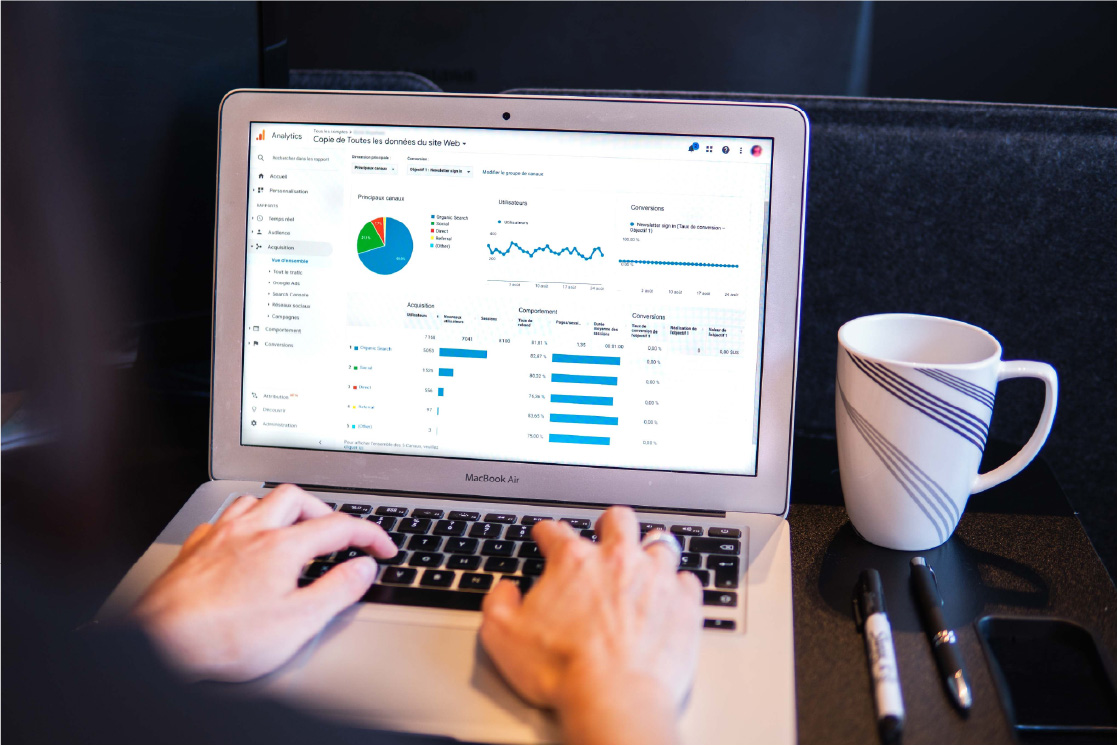
 So, what is marketing data?
So, what is marketing data?
Marketing data is generated across all of your digital channels. It is also determined from any qualitative research your organisation or industry might do as well as through telemarketing campaigns and surveys.
Does your brand need a revamp?
Mention this ebook for a special offer 30-minute brand consultation and audit FREE when we chat.
Let’s see where you stand!
 Customer Data
Customer Data
Arguably the most important, customer data includes information obtained from purchases and donors, including; name, contact details, address and any other distinguishable factors such as sex, contact preferences, past purchases, customer satisfaction (via survey and NPS) and much more.
 Prospect Data
Prospect Data
It’s super important for B2B that data retained is used for generating leads. Data can be obtained from survey completion, historical databases, referrals, subscribers, people following your social accounts, visitors to your website and online pages. Ensure your team is always abiding by data protection laws.

 WEB DATA (Users and visitors to your website or e-store)
WEB DATA (Users and visitors to your website or e-store)
Using tools to track the overall effectiveness of your website is a must particularly if you have an e-commerce website or sales pages. Common stats to track include visitors, users, goal completion, bounce rate and load times. You can also use tools like Google Analytics to determine the typical customer journey and details on website traffic (such as organic or referral).
 Social Media Analytics
Social Media Analytics
Each social platform has a slightly different way that you can measure, segment and understand your audiences. There are many tools on the market that can provide you with real time analytics for reporting.In addition, each tool has their own analytics reporting and if you are not reviewing this, then it is worth having a look at what the stats say. This information is crucial in determining who your audience is, what they seem to like about your brand, and importantly, what current trends are appealing to them. Pay attention to the different segments and personas. This will help to determine if your ads or content are achieving real engagement.
 ROI
ROI
Data derived from each channel provides real time results about how a campaign is progressing. This information allows marketing teams and management to measure the real time ROI of work. This is helpful to ensure you don’t progress too far with a campaign or strategy that is clearly underperforming or can be tweaked and re-tested.

Why is marketing data so important?
Why is marketing data so important?
 Segmentation and Personalisation
Segmentation and Personalisation
Marketers that exceeded their revenue goals are using personalisation techniques 83% of the time. In addition, businesses that employ data-driven personalisation were shown to deliver five to eight times the ROI on marketing spend (Invesp).

 Strategy
Strategy
Is your B2B client even on social media? Maybe. Or perhaps an advertisement in an industry journal or publication would be more effective. Gather all the information you can and work out where they play.
 Innovation
Innovation
One way to do this of course to make sure you’re at the very least keeping up with competitors, but real data allows your team to innovate. In an article by DMN, a panel discussing the impact of data driven marketing, found that a clear benefit for customers included innovation.
We use all of those digital interactions over time to create innovation and connect with customers in new ways. For example, mobile usage was so high on our online platforms that we created better, more secure apps.
We use all of those digital interactions over time to create innovation and connect with customers in new ways. For example, mobile usage was so high on our online platforms that we created better, more secure apps.
 Measurability and Accountability
Measurability and Accountability
Strategic marketers that are clever about using marketing data are more successful.

What is data analytics and how does it apply to marketing?
Let's take a closer look!
What is data analytics and how does it apply to marketing?
Clients regularly ask about data analytics: what is it, what should be measured and how does it apply to marketing?
Analytics is data derived from software that collates figures from various sales, marketing and social media channels and turns them into valuable insights. One of the most important gains from utilising analytics is the ability to report on ROI. Another plus is the informed ability to adapt and change campaigns based on actual data – so they are more successful.
 Failing to personalise could lose you customers
Failing to personalise could lose you customers
We’ve stressed the importance of personalisation and customisation as an effective marketing tactic and how when informed by data, the benefits increase dramatically. Moving beyond the basics of name, address and date of birth, other tools can be used to further identify the trends and preferences of customers. You may already have access to some of these tools; including in-built features of popular platforms – such as Google Analytics and each of the social media platforms.
Furthermore, according to a Salesforce study – 52% of customers are either likely or extremely likely to actually switch brands if a company doesn’t make an effort to personalise communications. Don’t risk losing customers!
 Predictive analytics
Predictive analytics
Carefully profiling your audience allows for great predictive insights around behaviour. Predictive analytics specifically uses advanced analytics including algorithms, data mining, modelling and AI to determine the likelihood of future outcomes based on historical data. It’s a whole new angle growing in adoption that can definitely give you an edge over competitors.
The holy grail of marketing is to proactively pounce upon every individual customer opportunity by predicting beforehand who will respond and predictively intervene each customer loss by predicting who will defect.
The holy grail of marketing is to proactively pounce upon every individual customer opportunity by predicting beforehand who will respond and predictively intervene each customer loss by predicting who will defect.
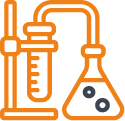 Digital Planners and Data Scientists
Digital Planners and Data Scientists
For the best results, brands might find recruiting data scientists (in the case of large organisations) to cut the data into strategic chunks. Within marketing teams, the role of a digital planner can be useful to formulate a sound digital strategy that can stretch up to 5 years into the future. These experts are key in forecasting sales, growth and cost per lead, and budgeting for campaigns.
 Testing channels and tracking conversions
Testing channels and tracking conversions
For any marketing strategy to be successful, your teams need to know which channels work and which channels are timewasters as quickly as possible. By paying attention to key social metrics and tracking against any acquisition goals – you can save a lot of money.

How valuable is your data after the campaign?
How valuable is your data after the campaign is run and won?
How valuable is your data after the campaign is run and won?
A successful campaign doesn’t just generate business; it should build quality new lead opportunities and generate insights that will step you above competitors. But this all largely depend on the quality and experience of the agency itself and there are other measures to determine its success.
So, what happens after the campaign is run?
 Quality data
Quality data
Not all data is created equal and for companies looking to fast track the development of a contact database you need to be vigilant about the source of the data. Although legal in other markets, address harvesting is illegal in Australia.

Working together with an outsourced agency will allow you to develop valuable prospect data and when actioned this data leads to priceless market insights. The outcome of having quality conversations is detailed, opportunity relevant information and leads. At the conclusion of the campaign when you are left with substantial market intelligence – you have an actionable competitive advantage over the competition, and you should not waste it. When planning your marketing activities this information is a goldmine.
 Sales and marketing follow up
Sales and marketing follow up
Quality data also means that members of your sales and marketing teams will be able to pick up on the call history and use these insights as required. They need to be translated into quality commentary that everyone can understand as even experienced salespeople can struggle with outbound calling.
In addition, sometimes a prospect is not ready to commit, perhaps timing may not be right for them. If they’re not given a clear follow up option such as a number to call a designated person back, a follow-up phone call from the telemarketer, an email address to contact - you can quickly lose them to a competitor.
Providing an easy option to follow up adds credibility and can increase campaign ROI – so you can’t afford to leave this out.

Does your brand need a revamp?
Mention this ebook for a special offer 30-minute brand consultation and audit FREE when we chat.
Let’s see where you stand!
 Nurture communications
Nurture communications
Rolling the market intelligence into nurture campaigns is a key element in coaxing prospects through the sales funnel. In the B2B buying cycle, prospects have a decision-making timeframe during which they may need to be nurtured a little before becoming sales qualified. Additionally, having the same telemarketer follow up via a carefully designed nurture campaign can be very effective.
 Opt in permissions
Opt in permissions
Permission is the act of getting consent from a subscriber to send them marketing messages. It’s a simple concept, but it has huge ramifications for your business.
The Spam Act
Specific guidelines on what you can and cannot send via email, SMS, MMS and instant messenger and what permissions are required. Australia requires email permissions…
Read more
There are generally two types of permission: Campaign Specific permission and General Opt-In’s. With a campaign specific permission, you may only communicate with that contact with Campaign specific communications, however, if a contact consents to a General Opt-In, you can send additional business-related communications until that customer Opt’s Out (including newsletters and other promotional communications).
If it has been more than six months since the last time you emailed one of your prospects, you should work on gaining their permission again. You can do this simply by sending them another opt-in email making sure they still want to hear from you. This way, you can get them to opt-in again or clean them off of your list if they opt out.

 Create equity from the data
Create equity from the data
How do you squeeze every ounce of equity from your telemarketing campaign? New contacts are definitely worth getting excited about. How you decide to connect and build a continued relationship with them is important.
Quality conversations with prospects do not just involve selling. If a prospect is engaging with a competitor, telemarketers will ask why. If a prospect is unwilling to engage with your brand or campaigns, experienced telemarketers will ask why not.
The information gleaned from such conversation can be viewed as valuable intelligence, especially where a prospect has shared around existing systems or relationships.
Any issues highlighted can then be assessed and addressed. This is an excellent opportunity for sales and management teams to demonstrate exceptional customer service and exceed expectations.
 How did it measure up?
How did it measure up?
When all is said and done, how happy are you with the outcome of your telemarketing campaign and overall performance of the agency? Share feedback of your own with your agency collaborators – in the same way that you are striving for excellence with your customers, they should be too!
We can help you
An experienced B2B lead generation agency like MIH can help you to organise everything you need to carry out a successful telemarketing campaign. Just ask our clients!
Case Studies
Client Case Studies
facePhilips Lighting
01. The Brief
Philips Lighting launched a loyalty program – Club Blue – aimed at providing product information, special offers from aligned wholesalers and loyalty rewards.
02. The Approach
We undertook an extensive on-boarding campaign – contacting electrical tradies throughout QLD, NSW, VIC & ACT to introduce the program, invite participation (SMS) and follow-up to gauge feedback. As part of the on-boarding, contacts provided their preferred wholesaler details – allowing targeted wholesaler/tradie offers to be shared.
03. The Results
With a dedicated group of local telemarketers, who enjoyed the cut to the chase attitudes, or the drawn out discussions that provided invaluable feedback, the campaign was incredibly successful and overachieved the expectations of Philips Lighting.
The outbound activity to more than 5000 electrical tradies had a 30.6% Club Blue program on-boarding result.
The market intelligence gathered and the wholesale preferences of the electrical tradies called was priceless insights for future marketing activities.
faceAmber Tiles
01. The Brief
Over a 3 year period we worked on many data projects for Amber as they moved toward a more uniform client and prospect data management approach. With many of the Amber stores owned and operated by franchisors the data activities were undertaken for those who wished to improve their ability to provide targeted communications
02. The Approach
We had warm, friendly local telemarketers call the Amber trade customers and have a chat about their business, the key contacts within their business, preferred ways of engaging with Amber (email, phone, newly released app) and thanking them for their ongoing commitment to Amber.
03. The Results
Knowing there was a problem with initial data quality, we were able to return to Amber a clean list of trade customers with contact names, email addresses and opt-ins for ongoing communications.
The Amber customer service ethos was reinforced by the warm conversation with a talented telemarketer who could have a laugh with the tradies.
